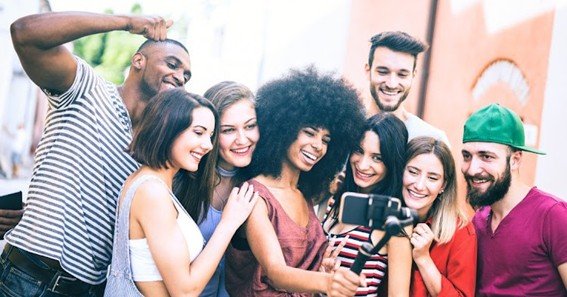In the digital age, social media influencers have risen to prominence, shaping trends and public opinion. However, some have crossed ethical lines, leading to public backlash and tarnished reputations.
The Rise of Influencers
Influencers are individuals who have built a substantial following on platforms like Instagram, TikTok, and YouTube. Their ability to sway public opinion and consumer behavior has made them valuable assets for brands seeking authentic connections with audiences.
Defining “Gone Wild” in Influencer Culture
The term “influencers gone wild” refers to instances where influencers engage in controversial, unethical, or reckless behavior, often for increased visibility or engagement. This can include:
- Participating in dangerous stunts
- Making offensive or insensitive remarks
- Promoting scams or misleading products
- Engaging in illegal activities
Such actions not only jeopardize their careers but also influence societal norms and expectations.
Notable Examples
- Logan Paul: Faced severe backlash after posting a video in Japan’s Aokigahara forest, showing a deceased individual. The incident led to temporary demonetization of his YouTube channel and widespread criticism.
- Tana Mongeau: Known for her wild antics and controversial events like “TanaCon,” which was canceled due to poor planning, leaving fans disappointed and raising questions about influencer accountability.
- FaZe Clan Members: Promoted the “Save the Kids” cryptocurrency, which turned out to be a pump-and-dump scheme, leading to financial losses for investors and damage to their reputations.
- Belle Delphine: Gained notoriety for selling “GamerGirl Bath Water” and posting provocative content, blurring the lines between marketing and shock value.
- Gabi DeMartino: Faced criticism for selling a childhood video of herself on OnlyFans, leading to accusations of distributing inappropriate content and resulting in her account’s suspension.
The Psychology Behind the Behavior
Several factors contribute to influencers engaging in “gone wild” behavior:
- Desire for Attention: The need to remain relevant in a saturated market can push influencers to take extreme measures.
- Monetary Incentives: Controversial content often garners more views, leading to increased ad revenue and sponsorships.
- Lack of Accountability: The absence of regulatory oversight allows influencers to operate without significant consequences.
- Echo Chambers: Surrounding oneself with like-minded individuals can reinforce harmful behavior and discourage dissenting opinions.
Impact on Society
The actions of influencers can have far-reaching effects:
- Normalization of Risky Behavior: Young audiences may emulate dangerous stunts or adopt harmful attitudes.
- Erosion of Trust: Repeated scandals can lead to skepticism towards influencers and the brands they endorse.
- Cultural Insensitivity: Misrepresentation or appropriation of cultures can perpetuate stereotypes and offend communities.
Legal and Ethical Considerations
Influencers are subject to laws and regulations, including:
- Federal Trade Commission (FTC) Guidelines: Mandate disclosure of sponsored content to ensure transparency.
- Defamation and Libel Laws: Protect individuals from false statements that can harm reputations.
- Intellectual Property Rights: Unauthorized use of copyrighted material can lead to legal action.
Failure to adhere to these laws can result in fines, lawsuits, and loss of credibility.
The Role of Platforms and Brands
Social media platforms and brands have a responsibility to monitor and regulate influencer behavior:
- Content Moderation: Platforms must enforce community guidelines to prevent the spread of harmful content.
- Due Diligence: Brands should vet influencers thoroughly before partnerships to avoid association with controversial figures.
- Accountability Measures: Implementing systems to report and address misconduct can help maintain integrity.
Moving Forward: Promoting Responsible Influence
To foster a healthier influencer culture:
- Education: Providing resources on ethical practices and digital literacy can empower influencers and audiences.
- Transparency: Encouraging open communication about sponsorships and content intentions builds trust.
- Community Engagement: Involving audiences in discussions about acceptable behavior can create a more accountable environment.
Conclusion
The phenomenon of “influencers gone wild” underscores the need for greater accountability and ethical standards in the digital sphere. By understanding the motivations behind such behavior and implementing measures to promote responsible influence, society can mitigate the negative impacts and harness the positive potential of social media influencers.
FAQs
1. What does “influencers gone wild” mean?
It refers to instances where social media influencers engage in controversial, unethical, or reckless behavior, often for increased visibility or engagement.
2. Why do influencers engage in such behavior?
Factors include the desire for attention, monetary incentives, lack of accountability, and reinforcement from echo chambers.
3. What are the consequences for influencers who go wild?
Consequences can range from public backlash and loss of sponsorships to legal action and long-term damage to their reputation.
4. How can audiences discern responsible influencers?
By evaluating transparency in sponsorships, consistency in messaging, and responsiveness to constructive criticism.
5. What role do platforms and brands play in regulating influencer behavior?
They are responsible for enforcing guidelines, conducting due diligence, and implementing accountability measures to maintain ethical standards.










